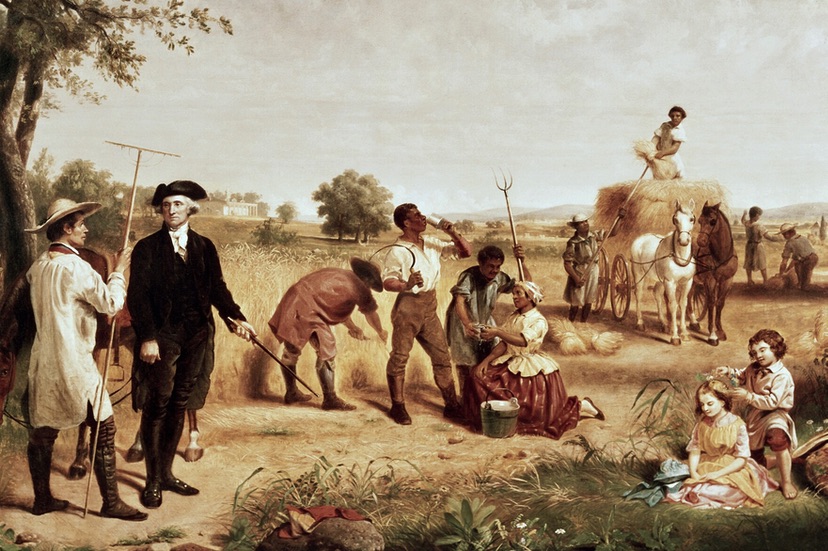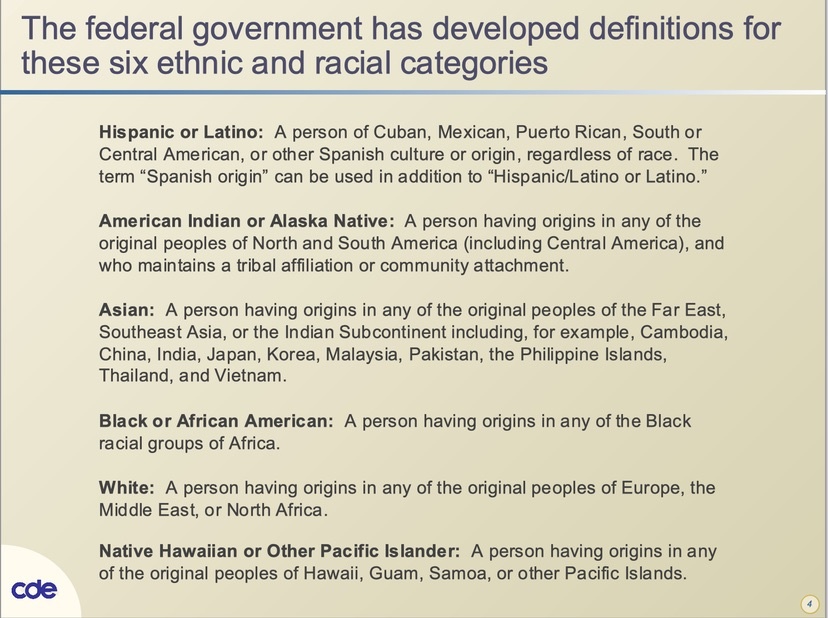One of the most important topics in current civil discourse, here in the U.S., concerns institutional racism. As I understand the situation, some school districts and some state legislatures have made it illegal to discuss this topic in public schools.
Other forbidden topics, in some jurisdictions, include gender transitions and same-sex relationships.
In Parts One and Two, I shared some of my thoughts about the use of the word ‘race’ in civil discourse, and as a concept. The concept has a celebrated place in American history, not least of which is this particular section of the U.S. Constitution, in Article 1, Section 2:
Representatives and direct Taxes shall be apportioned among the several States which may be included within this Union, according to their respective Numbers, which shall be determined by adding to the whole Number of free Persons, including those bound to Service for a Term of Years, and excluding Indians not taxed, three fifths of all other Persons.
As we note, use of the word “Slaves” was carefully avoided, by taking advantage of the euphemism, “three-fifths of all other Persons.” These “Persons” could not vote, had no rights as citizens, were permanently “bound to Service”, but were — as the result of intense negotiations between representatives of Southern States and representatives of Northern States — defined as partial Persons (three-fifths of a Person)… in terms of representative government and distribution of federal revenues.
In 1789, a slave was defined as property, and could be bought and sold, same as a mule or a bale of cotton, but the Southern States demanded that these objects of property be counted ‘partial’ Persons when determining the allocation of seats in the House of Representatives, and representation in the Electoral College that selected the President.
This compromise gave the Southern States influence at the federal level far in excess of their relatively small “voting population” — and may help explain why, between the approval of the Constitution in 1789 and the election of Abraham Lincoln in 1860, all but six of the elected Presidents hailed from Southern States, and Southern Democrats maintained outsized control of the U.S. House of Representatives.
Hindsight is 20/20, but in hindsight, and viewed through the lens of current moral values, the authors of the U.S. Constitution made an immoral choice… and a choice that led, ultimately, to the bloody massacre commonly known as the American Civil War.
If we were to consider the issues that were “controversial” in 1789, slavery would definitely be one of them. Slavery is no longer controversial, but its lingering aftereffect — institutional racism — is.
The word ‘race’ — when used to define human characteristics — is primarily the linguistic product of business interests in the British empire, (and the intellectuals who served them) who felt the need to define African slaves as ’not fully human’, and thus suitable for being treated as property.
Here’s a link to a recent article by Andrew Curran, in TIME magazine, about how word ‘race’ acquired the meaning we still give it in 2023.
When we use the word ‘race’ in that fashion, we are embracing an idea, developed during the 1600s, that people with darker skins can be classified as essentially ‘different’ from people of European ancestry.
I am thinking now about the fact that parents signing up their child for public school are asked to indicate the child’s ‘race’.
According to the U.S. Office of Management and Budget (OMB) Revisions to the Standards for the Classification of Federal Data on Race and Ethnicity, if your school-age child has ancestors who are Inuit, Tlingit, Mohawk, Apache, Mayan, Seminole, Yurok, Piute, Athapaskan, Aleut, or some other diverse ancestry from North or South America, your child is:
‘American Indian or Alaska Native’
Somehow, children with fairly diverse ancestry have been classified into a single ‘race’ when, in fact, their backgrounds might be quite dissimilar.
The same situation applies, of course, to ‘Black’. An Ethiopian child does not, generally, the same life experiences and ancestry as a child from Nigeria, or from Brazil, or from Haiti, or from Chicago. But American school systems want to define them as ‘the same race’… because of skin color and body shape.
Here are the official federal government categories of children, according to the Colorado Department of Education (CDE).
A lot of very thoughtful people, inside and outside our public education system, define children (and adults) in this manner. Of course, white supremacists are more than happy to accept ‘race’ as the key determining factor when valuing a person’s worth.
From the TIME article linked above:
This may ultimately be something that every American can agree on: wherever we come from, we are all the unfortunate heirs of a deadly and illegitimate science.
Turns out, we can’t agree. Not by a long shot. In fact, ‘racial differences’ constitute one of America’s most hotly debated issues in 2023. (While being unmentionable in some school classrooms.)
Some of us hope that, someday, we can let go the concept developed by ‘scientists’ in the 1600s to justify African slavery: the concept of ‘race’.
Meanwhile, some people will argue that racism cannot be addressed successfully unless we openly acknowledge that people classify themselves, and other people, according to skin color, body shape, and national place of origin. These advocates claim that we must keep talking about ‘race’ in order to successfully address institutional racism; the argument being, so long as we try to embrace ‘color-blindness’, the existing problem of racism can never be solved.
In a similar vein, some proponents of equal rights for people who choose alternative sexual patterns or identities, will argue that the subject of sexual preferences must be openly discussed and debated, and not swept under the rug.
Which could serve as a great introduction to the friendly debate that took place at the September 20 meeting of the PPOS Board of Directors, concerning “Controversial Issues”.


